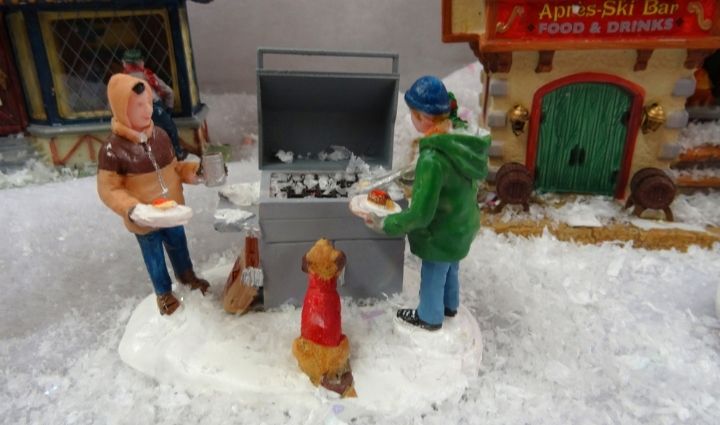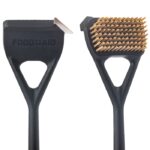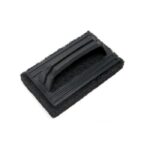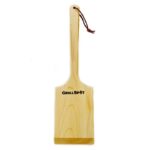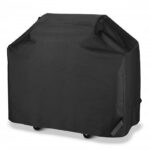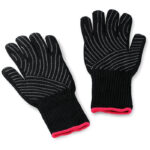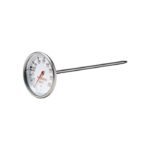Every year, grillers must make a choice: should they store their barbecue for the winter, or keep it nearby and ready to fire up for a taste of summer when the snow flies?
If you’re the type to tuck your grill away till spring arrives (after a thorough cleaning, of course), you may be wondering “can you even grill in the winter?” Here’s some good news—with a bit of preparation, you can barbecue year-round, even if there’s 3 feet of snow on the ground and the sun sets at 4:00 PM.
Whether you’re already a dedicated year-round griller or you’re just trying it out for the first time, you can expect to contend with less-than-ideal conditions when winter grilling. Between the decreased daylight, cold temperatures, and the sleet and snow, it can be hard to maintain your enthusiasm for cueing up the barbecue (though the promise of a perfectly seared steak or a juicy burger may help grease the grilling wheels). But with a little preparation and consideration for your grill and the winter grilling process, you can easily cook through the cold weather.
Keep reading to get 12 of our best winter grilling tips, from preparing your barbecue to grilling in the snow.
Winter Grilling Preparation
Consider these tips before you fire up the grill this winter.
1. Keep your grill covered
A good weather-resistant grill cover is important any time of year, but it’s especially important in the winter. A properly fitting grill cover will protect your grill from snow and ice build-up, keep out moisture and wildlife, and make grilling more convenient during winter. All you have to do is dust off the snow, remove the cover, and you’re ready to grill.
2. Relocate your grill
If it’s possible to move your grill closer to your home, you should—you’ll thank yourself when you don’t have to trudge even further through the snow to cook up your dinner. Just make sure you follow safety protocols and don’t move your grill into your garage or a nearby shed.
Safety Tips: A propane or charcoal grill has to be at least 10 feet from your home. While it is tempting in winter and other inclement weather, avoid covered patios, raised decks, garages, and apartment balconies.
3. Check your igniter
Before the snow flies, take some time to double check that your grill’s igniter is functioning. In the summer a faulty igniter can be a nuisance, but in winter temperatures it’s a downright pain. Nobody wants to be fiddling with matches or BBQ lighters when temperatures dip below freezing.
If you find your electronic igniter is on the fritz, the first thing to check is the battery. The batteries in electronic igniters will drain more quickly in the cold, so it’s a good idea to put a fresh battery in before winter arrives as part of your autumn maintenance routine.
Next, make sure that all the wires are securely connected to both the igniter box and the electrodes—a loose connection means no spark, and no spark means no BBQ. If you are getting a spark but the burner is not lighting, check the position of the electrode to make sure it is close to the gas ports in the burner.
Still not working? Check that there are no blockages in the burner that could be preventing the gas from flowing out of the port holes. Spiders often nest in burner tubes and the web can block the flow of gas.
4. Get the right lighting
The sun sets early in the winter, which can make outdoor grilling challenging (and not in a fun way). It’s important to be able to see what you are cooking, but you’ll need more than just a standard motion-activated outdoor security light for good grilling. This may mean adding more outdoor lamps or investing in a simple quick fix like a grill handle light or a good flashlight—we recommend a headlamp for easy hands-free lighting.
5. Keep extra fuel on hand
Cold, windy weather causes barbecue grills to burn through more fuel because they need more energy to maintain the same level of heat. Keeping an extra full tank of propane or extra bags of charcoal on hand is essential once the mercury drops. Be sure to store extra fuel in a dry place protected from snow and rain.
6. Clear the snow off
Even on days when you aren’t cooking, you should clear the snow off your grill to keep it accessible and prevent ice build-up. You’ll be thankful you made the effort the next time you go to grill and all you have to do is remove the cover instead of 3 feet of snow. While you’re at it, you may want to shovel out the area around and the walkway leading up to your grill.
Winter Grilling Tips for While You’re Cooking
Follow these tips while you’re grilling in the snow.
7. Clean your grates
In cold temperatures, it’s especially important to clean your grill grates each time you use your barbecue because air doesn’t move as quickly and easily through dirty grates. This might not seem all that important, but when it’s cold, poor air flow can really slow down the convection heating process and drag out cooking time, resulting in dry meat.
Grill it with these accessories:
8. Preheat your grill
Preheating is even more important in cold weather because it takes longer for the grill to get up to temperature in cold air. To ensure your grill is up to temperature before you start cooking, preheat with all burners on high for at least 15 minutes and use a thermometer to confirm it has reached cooking temperature before you start cooking.
9. Don’t open your grill
As Weber Grills says, “looking ain’t cooking.” Every single time you open your grill, heat escapes and the temperature drops, adding minutes onto your cooking time. In the winter, this can really slow things down since temperature is already much harder to maintain. Keep your lid shut and only look if absolutely necessary, such as when it’s time to flip. A timer and a cooking thermometer will be your best friends in this situation.
10. Dress appropriately for the elements
Your grill might be warm, but unless it is open—and it shouldn’t be—it won’t be releasing enough ambient heat to keep you warm. Be prepared to bundle up in your winter finest and tuck in any strings or hanging bits to keep them from dangling into the danger zone.
Instead of mittens, opt for grilling gloves that are built for dexterity and equipped to handle the high internal temperature of the grill. They should still keep your hands warm.
11. Opt for fast, low-effort recipes
For winter grilling, it’s often easier (and more comfortable) to stick to grilling things that won’t have you standing outside in sub-zero temperatures for too long. Winter is not the season for 16 or 18-hour smoking sessions on the charcoal grill. And since keeping the grill closed is important to maintaining cooking temperature, you’ll also want to select options that don’t involve a lot of basting or flipping.
12. Bring a cover for food
The cold air will immediately begin chilling your food as soon as it comes off the grill. Protect your efforts by remembering to bring a warmed covered plate to help keep food warm on the trip back to the dinner table.
Get Ready for Winter Grilling
Grilling in the snow isn’t as painful as you might think. With a little prep and the right tools, you can fire up your grill all winter long.

